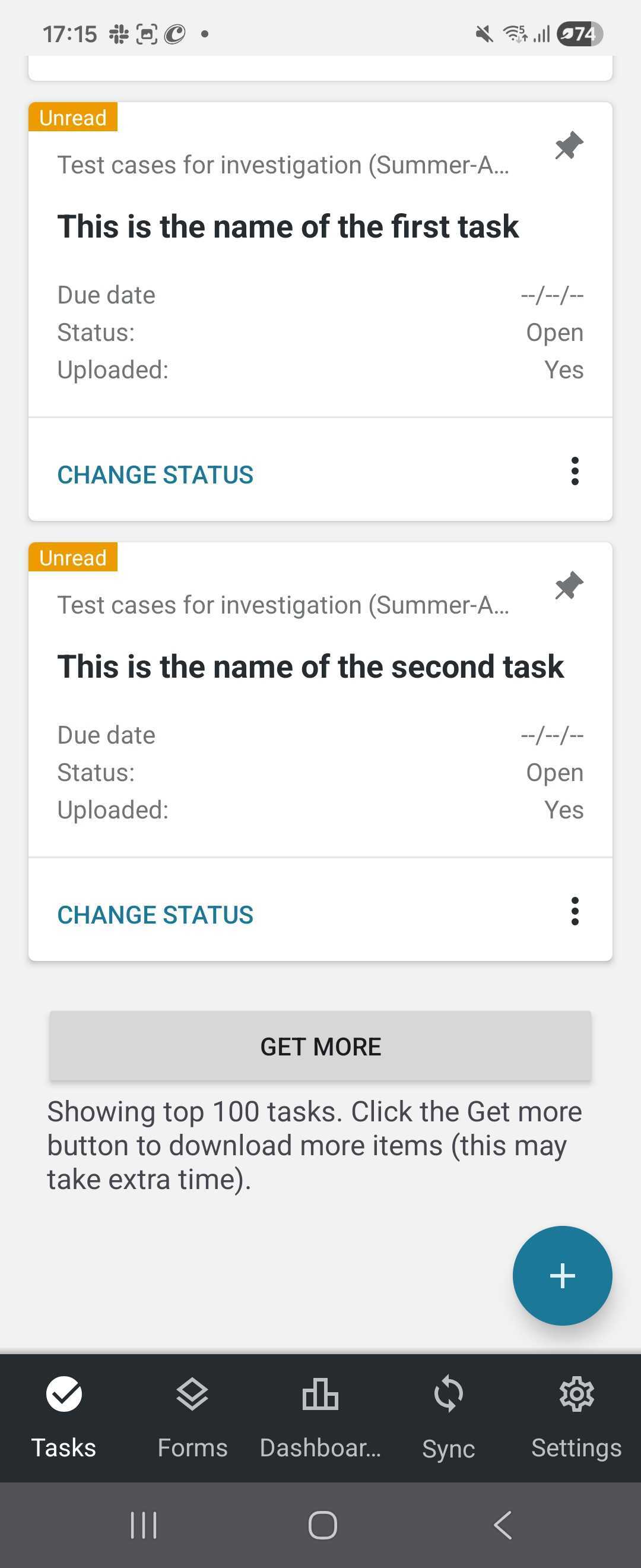Android incremental sync changes
To improve performance and reduce sync times, we've updated how incremental synchronization works. Previously, during each sync, all tasks/responses from all available task definitions/forms were downloaded. Customers with large datasets could have thousands of tasks and responses, which could significantly slow down the process.
We now assume that most tasks are primarily needed for historical or statistical purposes. As a result, incremental sync will now download only the latest 500 tasks and responses per task definition/form for everyday work. If additional data is needed, users can manually load more tasks/responses in chunks or choose the "Reload All" option in the app settings to retrieve the full dataset.
Overview
During the (incremental) sync, the latest responses/tasks are downloaded.
When scrolling down to the end of the list, you see the Get more button, which allows you to download more items.
When there is no button, you have no more items to download.

FAQ
How will the rollout of the new sync process happen?
The rollout will take place gradually over the course of a month. Each week, a group of customers will be transitioned to the new synchronization method. Their account manager will notify affected customers in advance. Once we confirm the improvements in the test groups, we will switch the sync to everybody.
Will all customers notice a change in sync behavior?
Not necessarily. Customers with a smaller number of tasks and responses may not notice any difference, as their data already fits within the new 500-items limit.
What happens if I previously downloaded multiple chunks of tasks?
With the new sync logic, each new synchronization will load only the latest 500 tasks per task definition/form, regardless of how many chunks were downloaded earlier. If you need access to older tasks, you can manually load additional chunks or use the "Reload All" option to retrieve the full dataset.
Can I share feedback about the new sync behavior?
Absolutely! We welcome all feedback and suggestions to help us improve this feature. Your input is valuable and will guide future enhancements. You can contact your account manager or our support team.
Is this change available on all platforms?
Currently, the updated sync process is being rolled out on Android. Support for iOS and Windows will follow after we receive positive feedback and confirm stability on Android.
